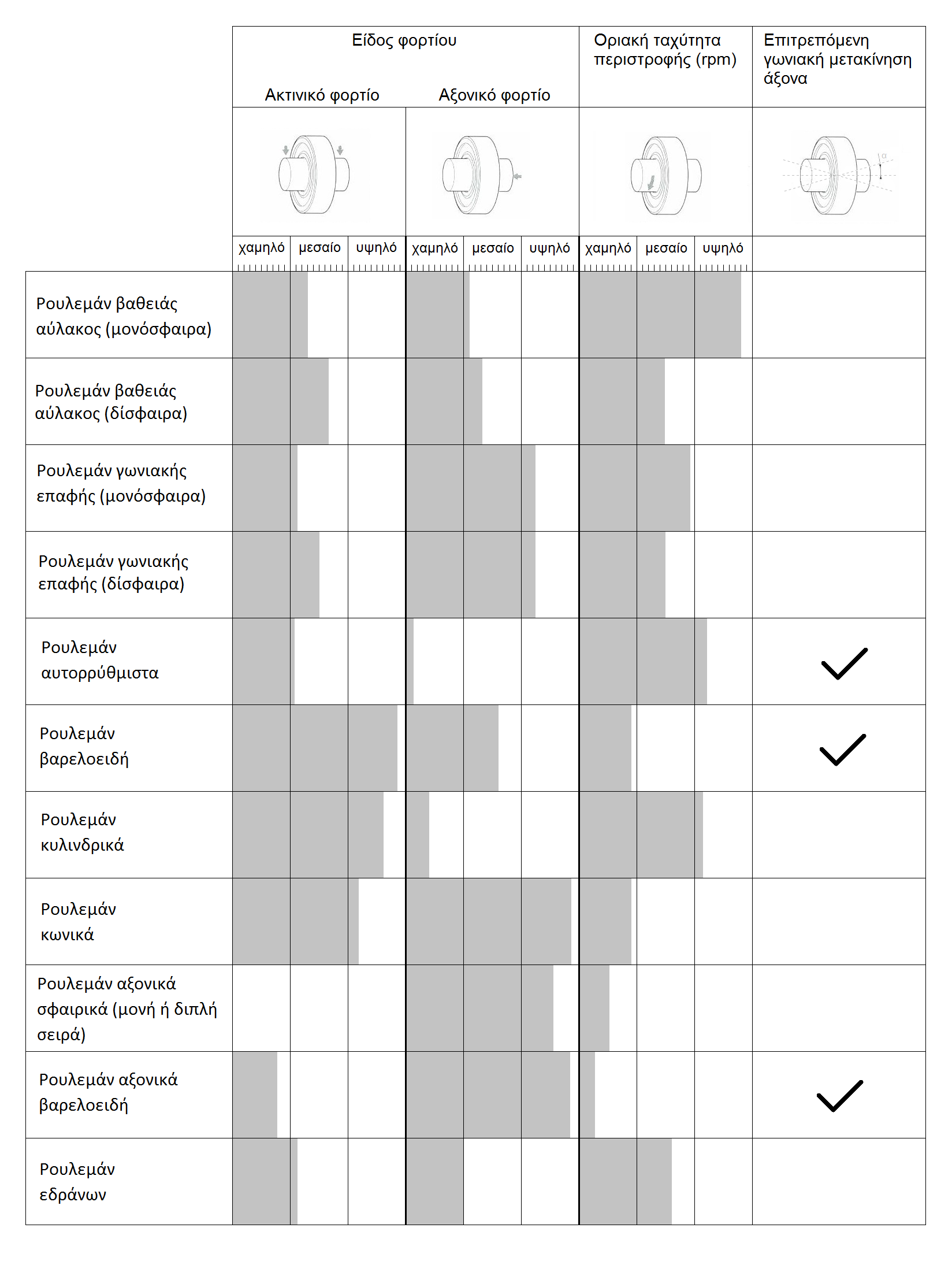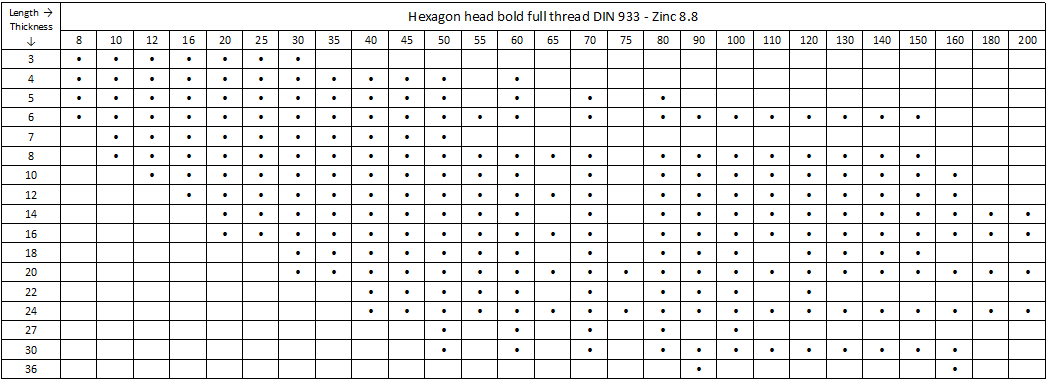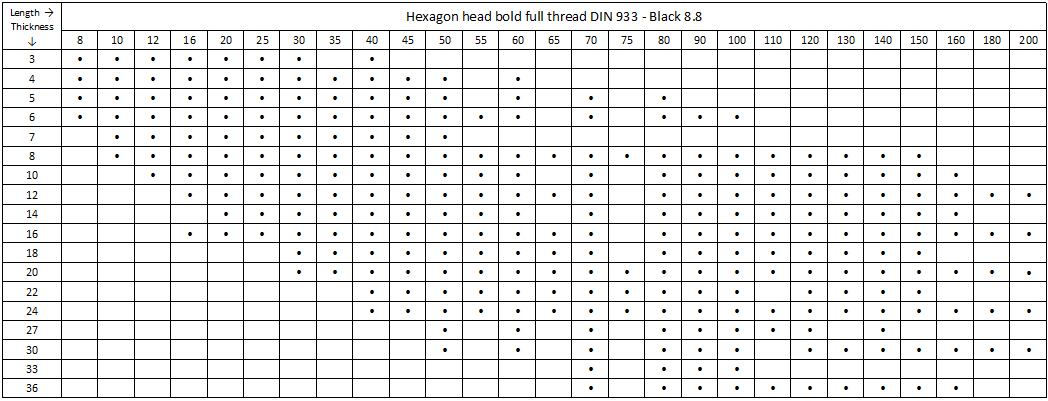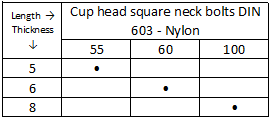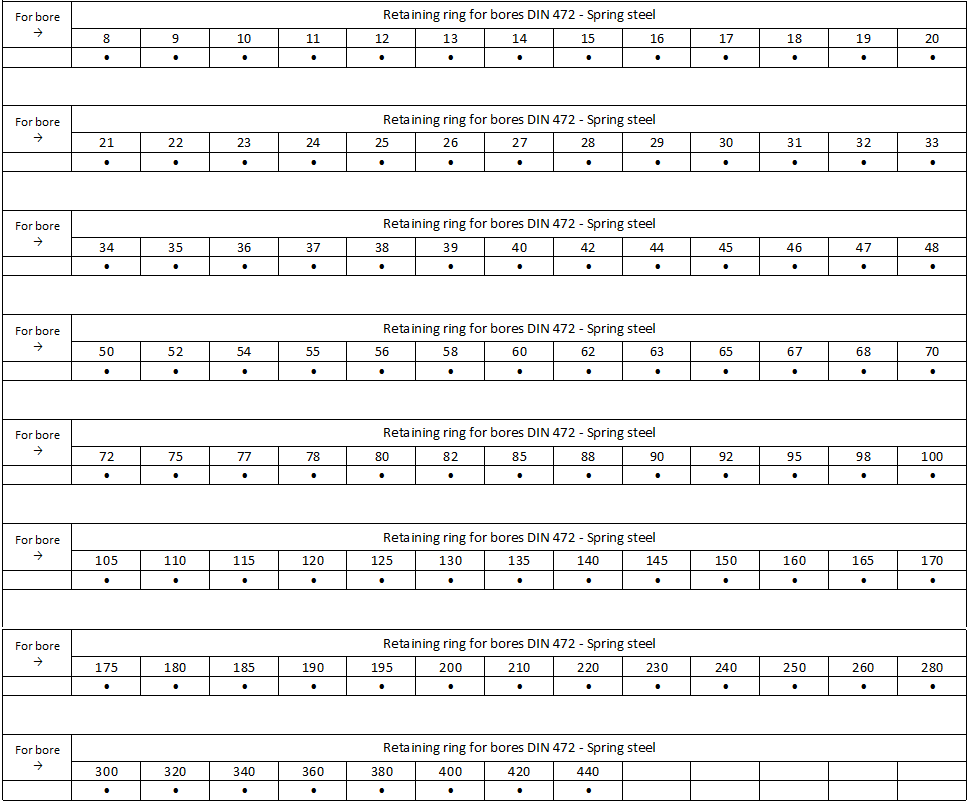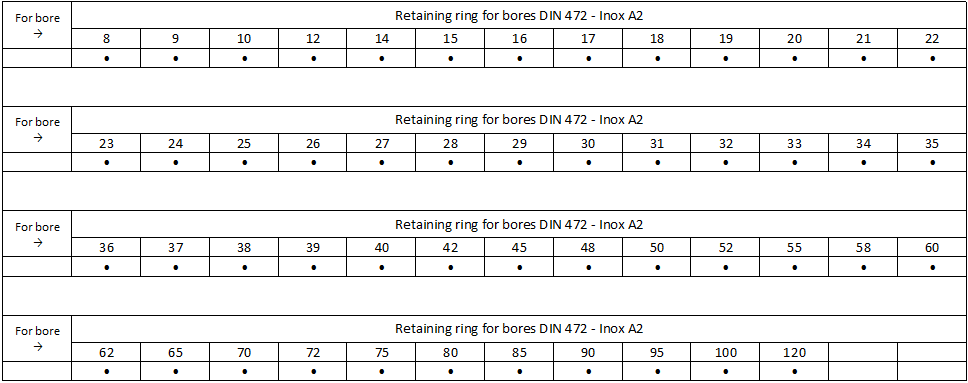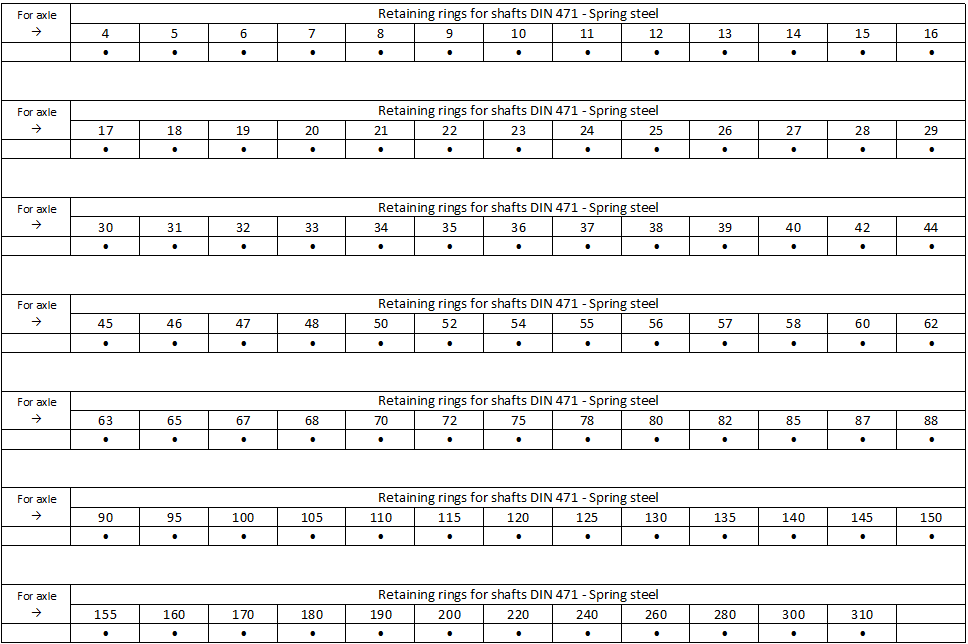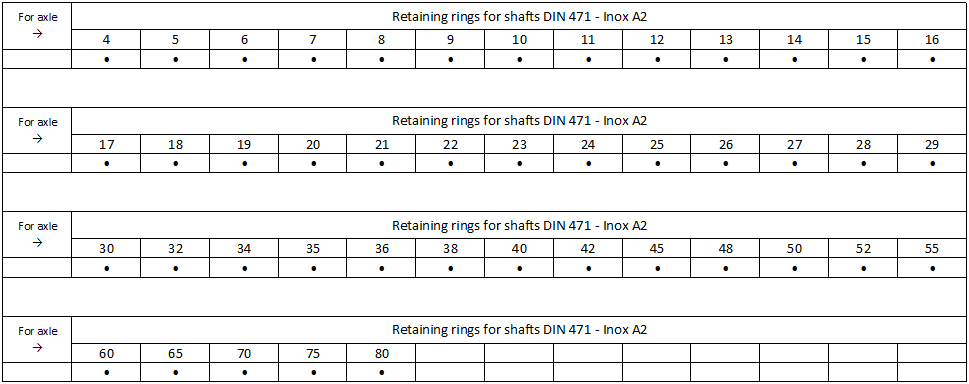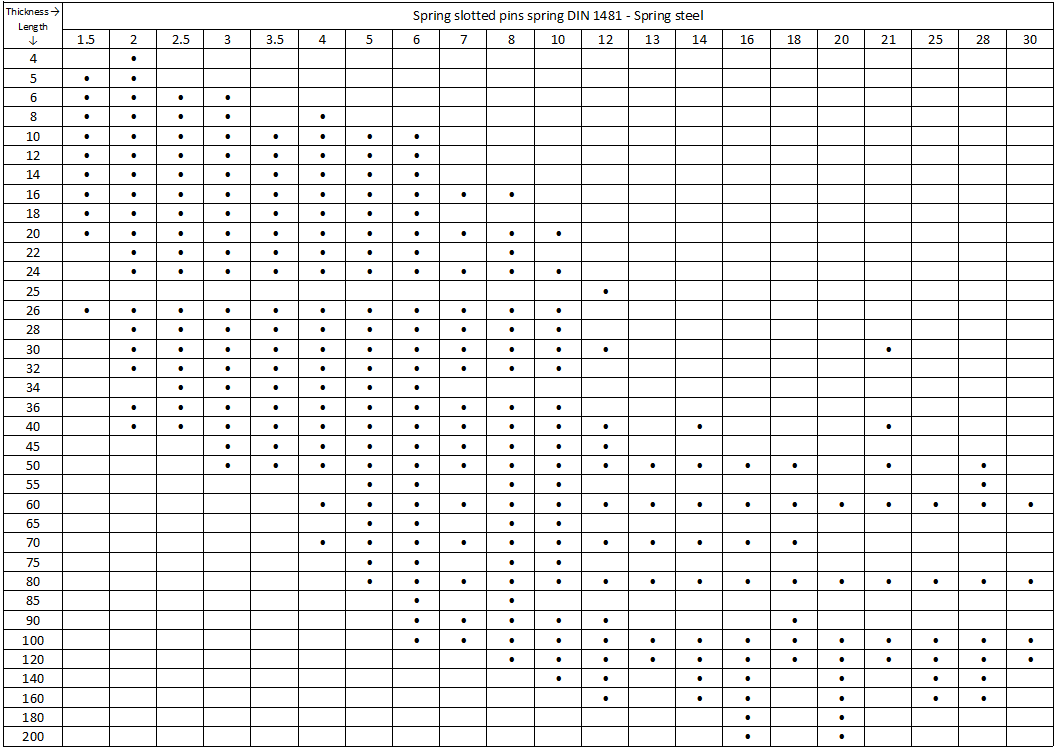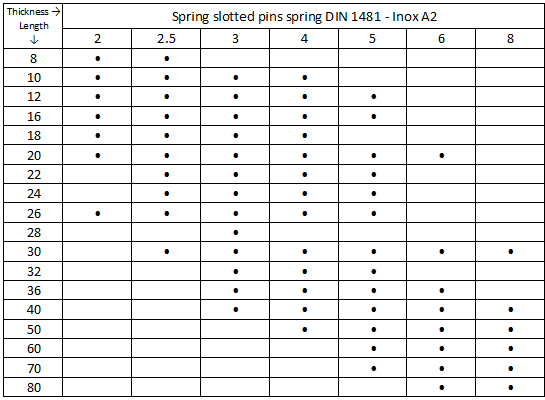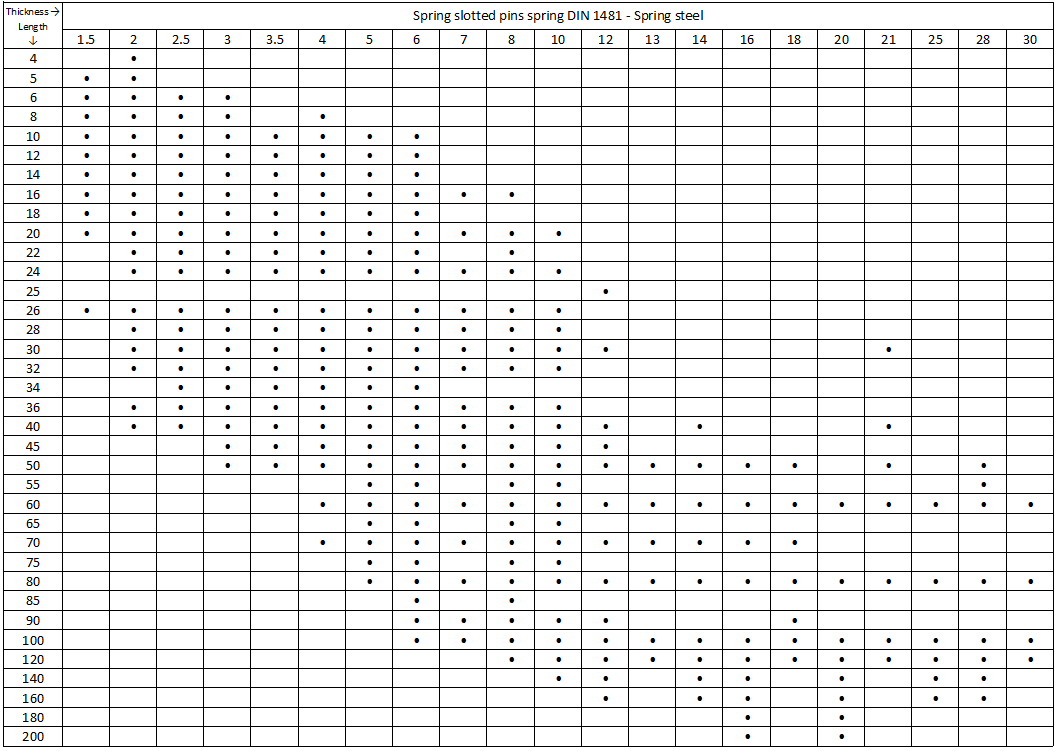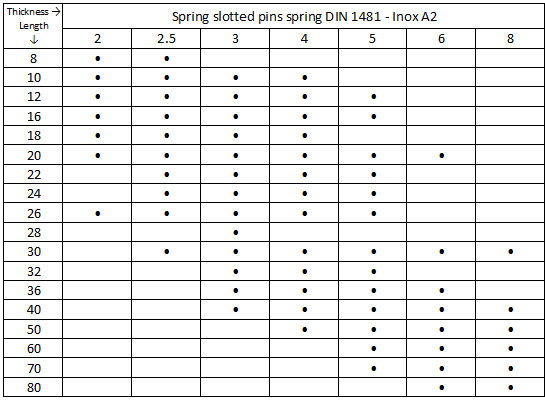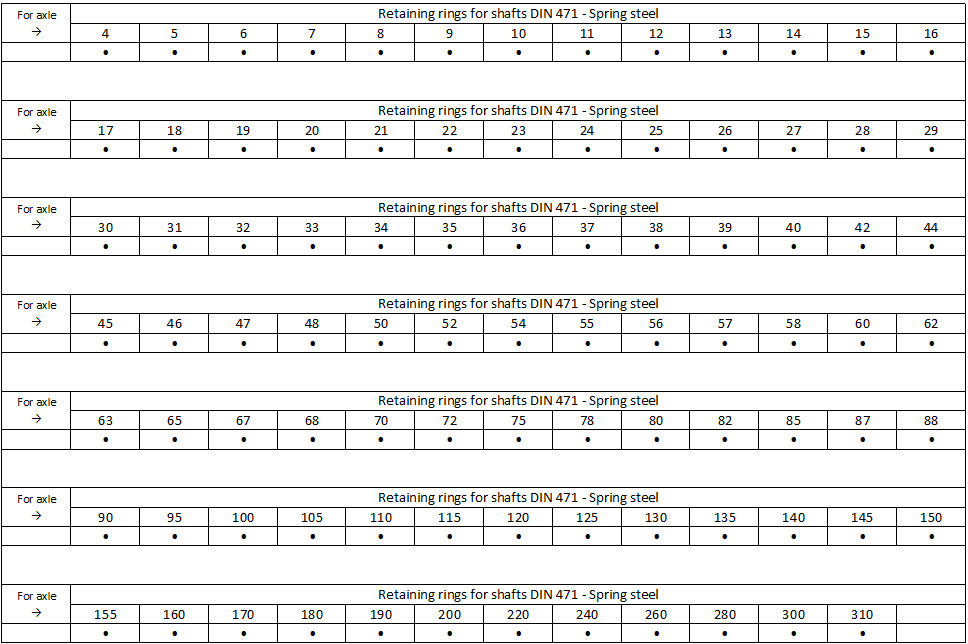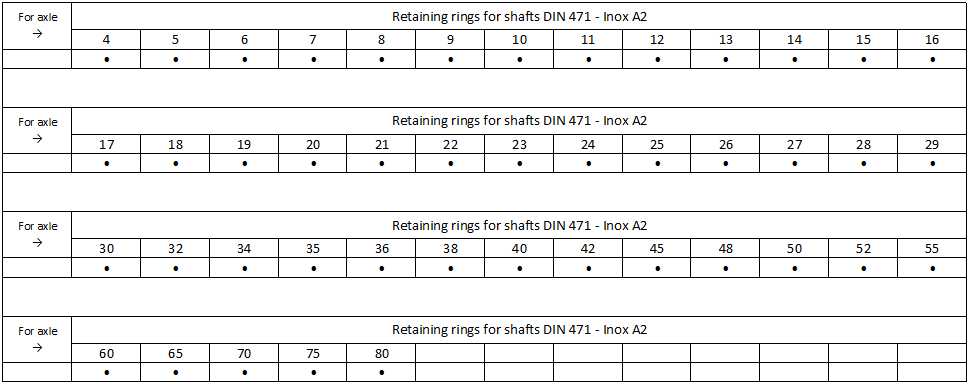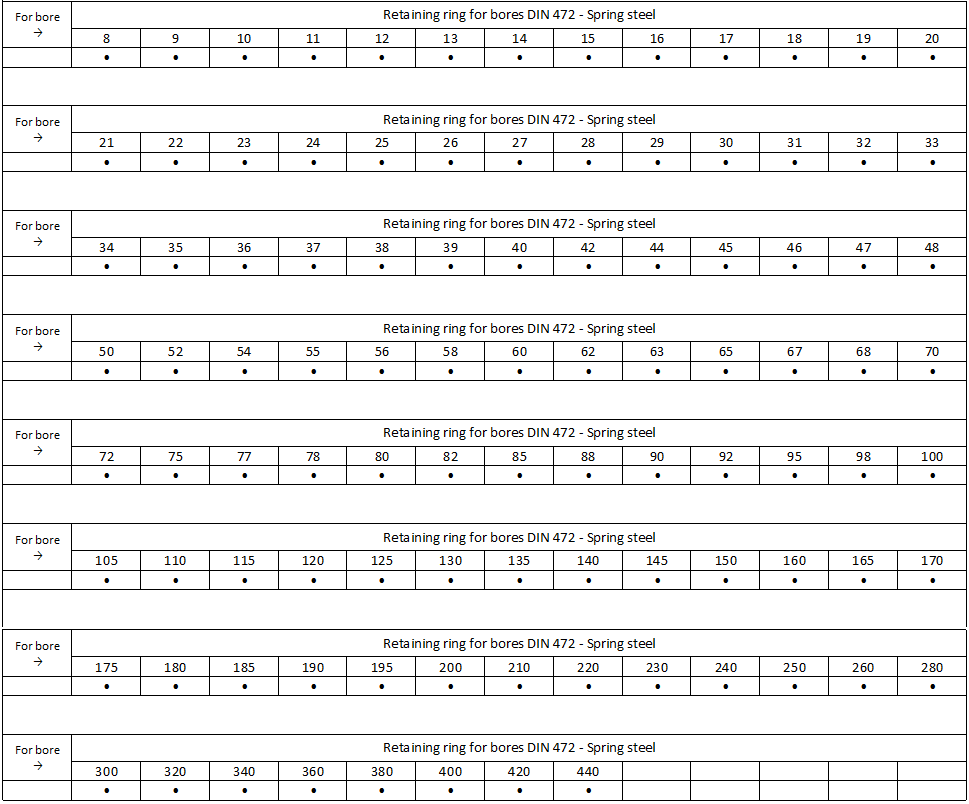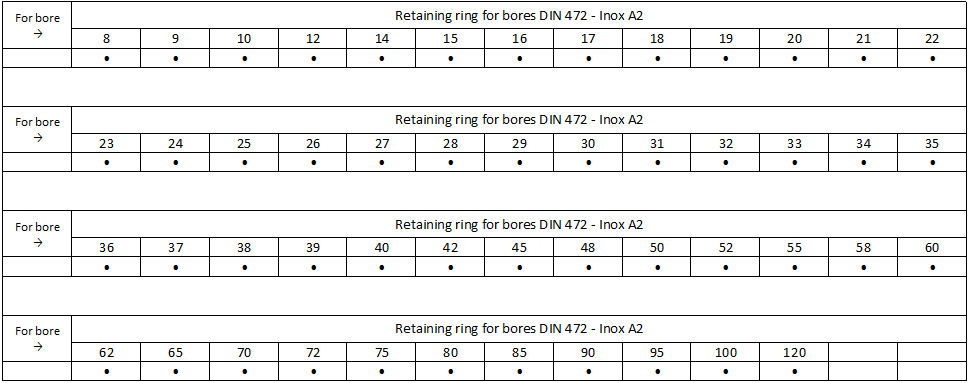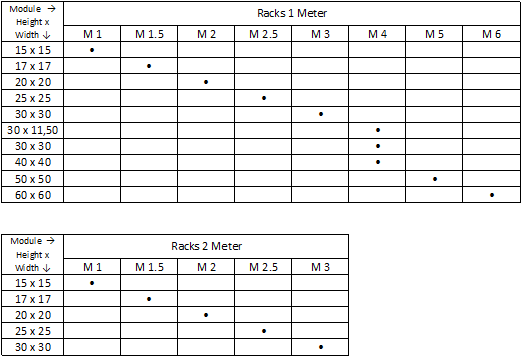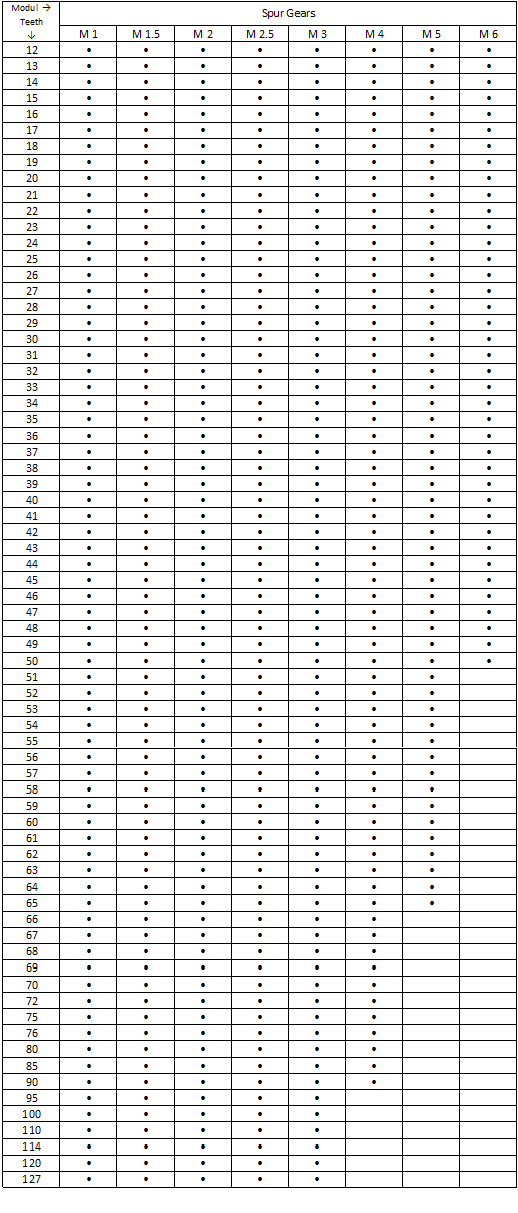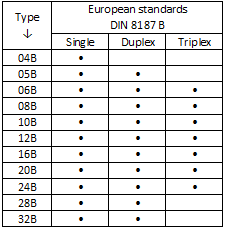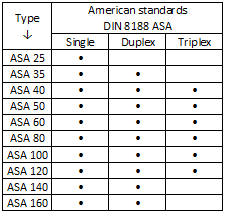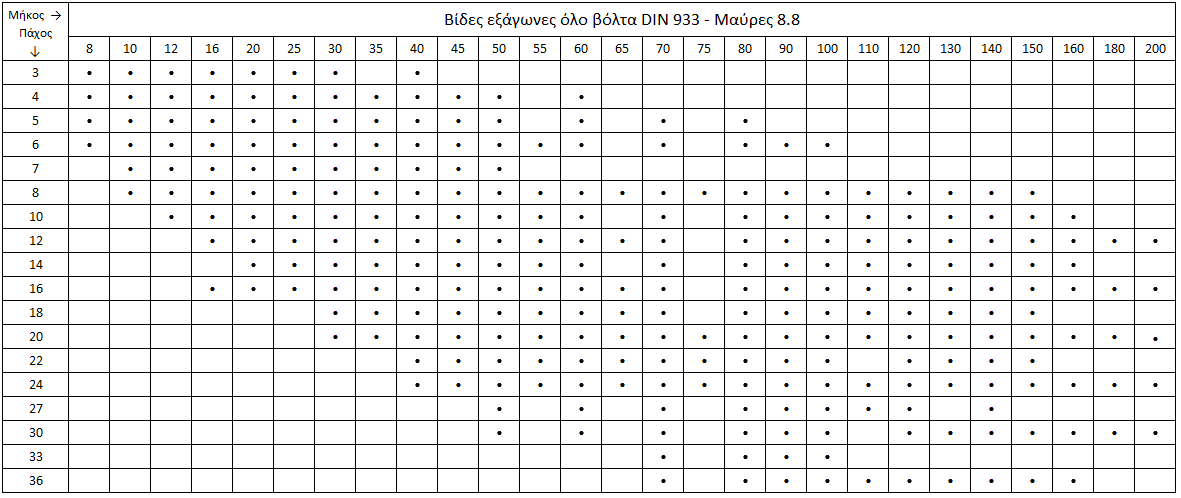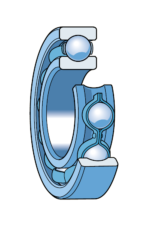 The most known and moving bearings of their kind. They are characterized by their simplicity and economic value. Loads they receive are radial and due to the low friction coefficient, they are suitable for high speeds *.They are durable and easy to maintain, available in single and double row as well as in open or sealed variants (2RS, ZZ, etc.). The rows of these bearings are as follows:
The most known and moving bearings of their kind. They are characterized by their simplicity and economic value. Loads they receive are radial and due to the low friction coefficient, they are suitable for high speeds *.They are durable and easy to maintain, available in single and double row as well as in open or sealed variants (2RS, ZZ, etc.). The rows of these bearings are as follows:
60..-62..-63..-64..-160..-618.. or 68..-619.. or 69..-622..-623..-42..-43..
* In the end there is a table showing the bearing forces in relation to their type.
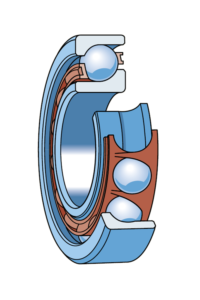 These bearings are designed to receive their loads axially *.In order to be able to cope with them, an angle of contact between the guides and the balls was created. The greater the contact angle, the axial loads are equally increased. Bearings operating in this way have the effect of simply accepting their load and so combine them several times with other bearings of the same type but opposite. They are available in single and double row as well as in open or sealed variants (2RS, ZZ, etc.). The rows of these bearings are as follows:
These bearings are designed to receive their loads axially *.In order to be able to cope with them, an angle of contact between the guides and the balls was created. The greater the contact angle, the axial loads are equally increased. Bearings operating in this way have the effect of simply accepting their load and so combine them several times with other bearings of the same type but opposite. They are available in single and double row as well as in open or sealed variants (2RS, ZZ, etc.). The rows of these bearings are as follows:
72..-73..-32..-33..-52..-53..
* In the end there is a table showing the bearing forces in relation to their type.
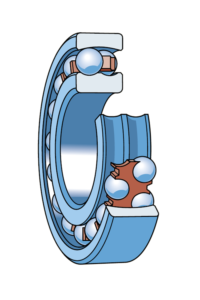 Self-aligning bearings consist of two rows of balls. In conjunction with the inner guide, the cage and the outer ring, their functionality permits applications that are not affected by bad alignment axes. The loads they receive are radial * and due to the low coefficient of friction, they receive high speed. Available with a cylindrical or tapered bored with clamping sleeves. Also available in open or sealed variants(2RS, ZZ, etc.). The rows of these bearings are as follows:
Self-aligning bearings consist of two rows of balls. In conjunction with the inner guide, the cage and the outer ring, their functionality permits applications that are not affected by bad alignment axes. The loads they receive are radial * and due to the low coefficient of friction, they receive high speed. Available with a cylindrical or tapered bored with clamping sleeves. Also available in open or sealed variants(2RS, ZZ, etc.). The rows of these bearings are as follows:
12..-13..-22..-23..-112..-113..
* In the end there is a table showing the bearing forces in relation to their type.
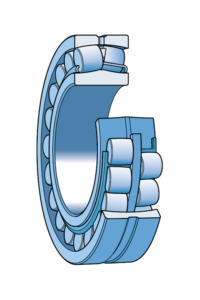 Spherical roller bearings consist of two rows of barrel cylinders. As with self-aligning roller bearings, the barrel roller bearings in conjunction with the inner guide, the cage and the outer ring allow their operation in applications that are not affected by bad alignment axes. This category is designed to receive heavy radial but also heavy axial loads * in both directions. They are also available with a cylindrical or tapered bore with clamping sleeves. The rows of these bearings are as follows:
Spherical roller bearings consist of two rows of barrel cylinders. As with self-aligning roller bearings, the barrel roller bearings in conjunction with the inner guide, the cage and the outer ring allow their operation in applications that are not affected by bad alignment axes. This category is designed to receive heavy radial but also heavy axial loads * in both directions. They are also available with a cylindrical or tapered bore with clamping sleeves. The rows of these bearings are as follows:
213..-222..-223..-230..-231..-232..-239..-240..-241..
* In the end there is a table showing the bearing forces in relation to their type.
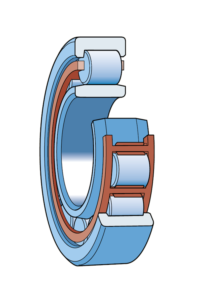 Cylindrical roller bearings are a fairly special series which has quite large tolerances in axial loads * and a large range in the speed of rotation. Their peculiarity is recognized by the variety of types in terms of dividing one of the two rings in order to place them in adverse conditions. The rows of these bearings are as follows:
Cylindrical roller bearings are a fairly special series which has quite large tolerances in axial loads * and a large range in the speed of rotation. Their peculiarity is recognized by the variety of types in terms of dividing one of the two rings in order to place them in adverse conditions. The rows of these bearings are as follows:
N..2.., N..3.., N..4.., N..10.., N..22.., N..23.. (π.χ. NU 205, NUP 2208)
* * In the end there is a table showing the bearing forces in relation to their type.
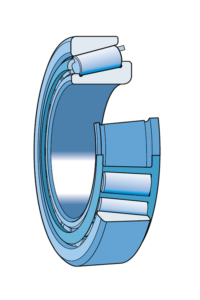 Tapered roller bearings are a category that holds high values both in radial and axial loads (in one direction) *. They are divisible bearings and can be placed separately with each other. They consist of the outer conical ring and the cage with the conical cylinders integrated with the inner ring. The rows of these bearings are as follows:
Tapered roller bearings are a category that holds high values both in radial and axial loads (in one direction) *. They are divisible bearings and can be placed separately with each other. They consist of the outer conical ring and the cage with the conical cylinders integrated with the inner ring. The rows of these bearings are as follows:
302..-303..-313..-320..-322..-323..-330..-331..-332..-
* In the end there is a table showing the bearing forces in relation to their type.
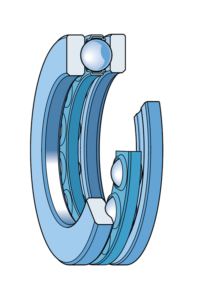 These bearings are made as their name implies for large axial loads. In contrast, however, radial loads must be zero. They also have the advantage because these bearings are divisible to be placed separately (shaft ring with nest ring and cage with spheres are divisible). They are available in single and double row designs. The rows of these bearings are as follows:
These bearings are made as their name implies for large axial loads. In contrast, however, radial loads must be zero. They also have the advantage because these bearings are divisible to be placed separately (shaft ring with nest ring and cage with spheres are divisible). They are available in single and double row designs. The rows of these bearings are as follows:
511..-512..-513..-514..-522..-523..-524..
* In the end there is a table showing the bearing forces in relation to their type.
 These bearings are made to accept even larger axial loads as opposed to spherical axes. Another difference between them is that they can accept radial loads. And they have the advantage of being divided and placed separately. Available in single row designs and the rows of these bearings are as follows:
These bearings are made to accept even larger axial loads as opposed to spherical axes. Another difference between them is that they can accept radial loads. And they have the advantage of being divided and placed separately. Available in single row designs and the rows of these bearings are as follows:
293..-294..
* In the end there is a table showing the bearing forces in relation to their type.
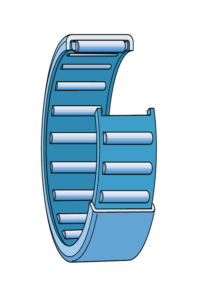 Needle roller bearings are designed to be applied in space-size and limited space dimensions. Unlike their size, the loads that needle stick are large enough. The rows of these bearings vary because the bearing type plays a role, if there is an inner or even external ring, etc.
Needle roller bearings are designed to be applied in space-size and limited space dimensions. Unlike their size, the loads that needle stick are large enough. The rows of these bearings vary because the bearing type plays a role, if there is an inner or even external ring, etc.
* In the end there is a table showing the bearing forces in relation to their type.
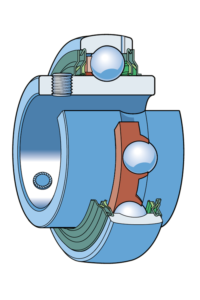 Insert bearings are made to be placed in molded or iron shells with the aid of the outer ring handle. They are simple in their construction, such as deep groove bearings, having as an advantage the positioning of the shaft without the necessity of the presence of a clamping sleeve. The most movable types of these bearings in relation to the axis articulation are:
Insert bearings are made to be placed in molded or iron shells with the aid of the outer ring handle. They are simple in their construction, such as deep groove bearings, having as an advantage the positioning of the shaft without the necessity of the presence of a clamping sleeve. The most movable types of these bearings in relation to the axis articulation are:
§ Insert bearing with wide inner ring and two set screws.
§ Insert bearing with narrow inner ring and two set screws.
§ Insert bearing with wide inner ring and eccentric locking collar.
§ Insert bearing with narrow inner ring and eccentric locking collar.
§ Insert bearing with wide inner ring and concentric 360 lock collar.
Also, all of the above types are available in two rows:
..2.., ..3.. (π.χ.UC 205, UC 305)
* In the end there is a table showing the bearing forces in relation to their type.
 The most known and moving bearings of their kind. They are characterized by their simplicity and economic value. Loads they receive are radial and due to the low friction coefficient, they are suitable for high speeds *.They are durable and easy to maintain, available in single and double row as well as in open or sealed variants (2RS, ZZ, etc.). The rows of these bearings are as follows:
The most known and moving bearings of their kind. They are characterized by their simplicity and economic value. Loads they receive are radial and due to the low friction coefficient, they are suitable for high speeds *.They are durable and easy to maintain, available in single and double row as well as in open or sealed variants (2RS, ZZ, etc.). The rows of these bearings are as follows:









